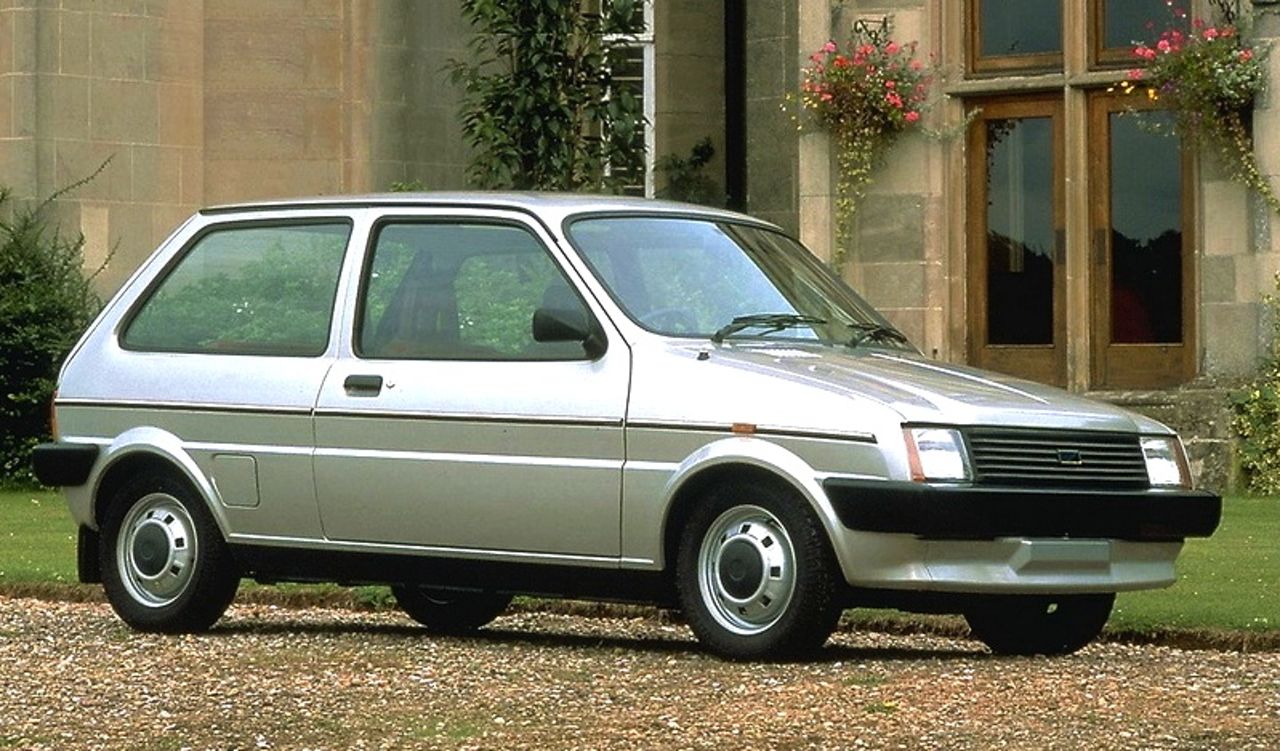Why the Car industry Needs More
Creativity
First published on SHOTS.
Jackie Stevenson, Global CEO at The Brooklyn Brothers , loves cars but - aside from a handful of examples - feels dejected at the state of the sector's commercial output. Here, she explains why the future of automobile advertising can shine as brightly as the bodywork on a newly crafted supercar.
by Jackie Stevenson

on 7th December 2021
I have always loved cars, from my very first – a much loved, much handed down
silver
Mini Metro – to my pride and joy, Jenson Button’s McLaren MP4 12-c, number 76 off the line!
Cars can be hugely emotive. They’ve brought me joy and exhilaration, as well as sometimes driving me to
distraction. I’ve road-tripped in them, camped in them, popped down to the shops, and raced in them. I’m
excited by what the future holds as they transition into climate friendly, electric powered, autonomous
driving, life-enhancing pods.
So why, when I look at how our industry tells the story of these incredible machines, do I often feel
deflated? Where other categories entertain, inspire, and inform with creativity and storytelling, the
automotive sector too often serves up scenic road clichés and lingering bonnet shots.
“The automotive sector too often serves up scenic road clichés and lingering bonnet shots.”

Above: Cars can be hugely emotive, even a silver Mini Metro.
While trainer brands inspire us to be better athletes, neighbours, even humans;
perfumes take us on wild flights of fantasy; chocolate brings us closer together; and even detergent
helps us understand our children better – why does the car industry shy away from the bold and
expressive? Why are there so few inspiring and uplifting stories to light up the media and get people
talking?
Of course, there have been some greats. Hands up who remembers the ‘way before their time’ BMW The Hire
films, Vauxhall’s, Honda’s Power of Dreams campaigns, Audi’s Clowns, VW’s divorcee… even Volvo’s epic
Van Damme splits? Brilliant human insights, wonderfully observed, shamelessly, effectively borrowing
from entertainment. But why are there so few?
The moment is ripe now to ditch the clichés and for car manufacturers to inspire drivers. The industry
is on the cusp of evolutionary change. Not only with the move from petrol and diesel to electric
vehicles, but also in the way people buy and own cars. Consumers feel differently now about their
vehicles, with post-pandemic personal transport now becoming integral to their concept of safety.
There are so many opportunities for manufacturers to respond to people’s needs with consistent and newly
crafted storytelling, demonstrating the exciting future for their vehicles and how they’re going to add
to every aspect of their customers lives. For example, we worked with Mini the launch of its all-new
electric model, ditching the obligatory blue neon lighting and charge comparisons, launching the car as
a feeling with a money-back guarantee if you didn’t ‘feel Mini Electric’ the minute you owned it.
The Sunday Times also added a new category to its car awards - Dog-friendly car of the year - on the
back of our work showing how the Mini really is the car your dog would choose – and not a glimmering wet
road shot in sight.
“There are so many opportunities for manufacturers to respond to people’s needs with consistent and newly crafted storytelling.”
Above: Honda's Impossible Dream and Volvo's Epic Splits are some of the car industry's few and far between advertising high points.
So, although there are challenges for the sector, many of which are beyond its control, 2022 could be a year of opportunity for car brands. We’ve seen petrol and diesel shortages – the result of government policies, and nothing to do with the car manufacturers, but impacting them, nonetheless – along with the start of supply chain issues resulting in a surge in the used market. But these offer huge opportunities with new stories to tell as fuel choice becomes a more immediate issue impacting consumers and the shortage of stock provides brand opportunities to build love for new products as soon as supply returns.
“Creative agencies can go beyond the metal they’re selling, bringing humanity and creativity to their storytelling”
And then we have the interesting PR optics around the rollout of electric vehicles and COP26. At the
climate change conference, there was a call for all manufacturers to sign up to an all-electric future
by 2035, but many of the larger manufacturers haven’t signed. It’s easy to assume they’re more
interested in promoting and selling cars, but much of this is driven by governments' reticence to sign
up and provide the infrastructure needed to support a full-scale change to electric, triggering another
potential fuel crisis with lack of adequate charging points. A double whammy for consumers.
The market may be complex, but we can all rise to the challenge. Car manufacturers can focus on the
future with positivity and demonstrate they genuinely understand the integral role their product plays
in so many people’s lives. Creative agencies can go beyond the metal they’re selling, bringing humanity
and creativity to their storytelling, with both having a huge opportunity to talk about future
technology and how this can transform our daily lives, as well as the life of our planet.
It’s a brilliant, brave and beautiful industry, and it deserves all the creativity we can bring to it.
This is the time to engage, entertain and excite as we all look forward to a newly evolved golden age of
transport where I, for one, want to see the car, in all its many exciting future forms, taking pride of
place.





